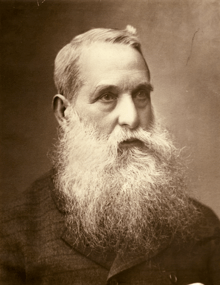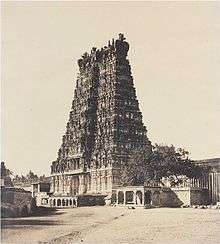Linnaeus Tripe


Linnaeus Tripe (14 April 1822 – 2 March 1902) was a British photographer, best known for his photographs of India and Burma taken in the 1850s.
Early life
Linnaeus Tripe was born in Plymouth Dock (now Devonport), Devon, to Mary (1786–1842) and Cornelius (1785–1860). He was the ninth of twelve children. He joined the East India Company army in 1838, and in 1840, became a lieutenant based in the south of India. He returned to England in 1850, on a leave that was extended due to ill health until 1854. During this time he began to experiment with photography. He returned to Bangalore, India, as a captain in June 1854. In December of that year he made his first photographs of India. In February of the following year he took part in the Madras Exhibition of Raw Products, Arts, and Manufactures of Southern India, displaying 68 photographs of previously unphotographed temples. The jury declared these photographs the "Best series of photographic views on paper."
Burma
In June 1855, Tripe was chosen by Lord Dalhousie to accompany an official expedition to Ava, Burma to obtain representations of scenes and buildings. This visit resulted in the publication of Burma Views. This was widely distributed and very well received.
Madras
In March 1857 he became official photographer to the Madras government, taking photographs of objects shown at the Madras exhibition and portraits of Madras residents. In 1858, he took photographs of subjects of architectural or antiquarian interest, and pictures useful from a practical, engineering perspective. He exhibited 50 photographs from this tour in the annual exhibition of the Photographic Society of Madras in 1859. In March 1862 a series of his photographs were exhibited by Professor Archer at a meeting of the Photographic Society showing 'Poodoocotah, Madura, Ruakotta, Seringham, the Elliot Marbles, &c., &c.' [1] These photographs are now in the British Library, while the marbles are in the British Museum.[2]
Following the Indian Rebellion of 1857, control of India went to the British Crown, and in June 1859 Tripe was ordered not to undertake any new work. At the end of that year he was told to close the business and sell off the equipment. One of his assistants, C. Iyahswamy, also became a talented photographer.[3]
Return to the army
In 1863 Tripe returned to the army and was continually promoted, becoming colonel in August 1873. Whilst in Lower Burma in February 1869 he made his two final series of photographs. Here he took photographs of landscapes made on glass negatives. Tripe left India in 1873 and retired from the Army in April 1874. He died in Devonport on 2 March 1902.[4]
References
- ↑ Journal of the Photographic Society, 15 March 1862, p. 12
- ↑ Photos of the Elliot Marbles, Linnaeus Tripe, British Library, retrieved 19 December 2013
- ↑ Madras Journal of Literature and Science 1861
- ↑ Linnaeus Tripe Archived 2012-10-11 at the Wayback Machine.
External links
| Wikimedia Commons has media related to Linnaeus Tripe. |